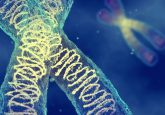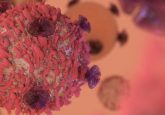Brain cancer development gene identified by new computational approach

A new study has utilized a novel computational approach to identify a gene that could represent the driving force behind mesenchymal glioblastoma, the most common type of brain cancer. The research, performed at Columbia University Medical Center (NY, USA) has recently been published online in Cell.
The new algorithm, termed DIGGIT (Driver-Gene Inference by Genetical-Genomic Information Theory), was used to analyze gene regulatory and signaling networks and showed that loss of the KLHL9 gene could be the root cause of the development of glioblastoma. Transplant experiments in mice demonstrated that tumor growth was surpressed when the researchers reintroduced the KLHL9 protein, highlighting a potential strategy for treating the disease.
Study leader Andrea Califano (Columbia University Medical Center) commented: “This algorithm adds a new dimension to our ability to identify the genetic causes of complex disease. When combined with other tools that our lab has developed, it will help identify many more genes that hold potential as genetic biomarkers of disease progression and targets for treatment.”
In previous studies, Califano utilized high-power computer models to show certain cancers have highly conserved ‘master regulators’. Master regulators are genes whose individual or synergistic activity is required for a disease to develop and persist. However, these models have never been able to provide information on the mutations that drive the abnormal activity of master regulators. The current study combined existing computational tools with DIGGIT, as DIGGIT is able to work backwards from the master regulators to identify the mutations that drive cancer.
“Conventional techniques, like genome-wide association studies, must test all possible genetic mutations and variants in a disease cell, compared with a normal cell,” lead author and developer of DIGGIT James C Chen (Columbia University Medical Center) explained. He continued: “These can number in the tens to hundreds of thousands. As a result, based on the number of patients we have profiled, we have sufficient statistical power to identify only the most striking mutations. The DIGGIT algorithm, combined with what we know about regulatory events in the cell, can help us sort through this mass of data and identify critical hidden mutations that otherwise would have gone undetected.”
This pioneering approach was tested on mesenchymal glioblastoma, the most aggressive subtype of the disease. This was achieved by analyzing gene expression and mutational profile data from over 250 patients collected by the Cancer Genome Atlas consortium.
The researchers identified two genes termed C/EBPδ and KLHL9, which appear to activate glioblastoma master regulators. C/EBPδ had already been discovered and was undergoing further study; however, KLHL9 had never been linked to any form of cancer, so was subsequently focused on.
In lab experiments, the researchers then reactivated the faulty KLHL9 gene in aggressive glioblastoma cells and this proved sufficient for the cells to lose the mesenchymal phenotype. In another experiment, the KLHL9 protein was reintroduced into mice receiving direct transplants from patients with mesenchymal glioblastoma. The reintroduction of the protein caused the tumors to regress, strengthening the evidence that KLHL9 mutations are directly responsible for this cancer subtype.
The algorithm is highly adaptable and its use has allowed Califano’s team to identify mutations and heritable variants linked to breast cancer and Alzheimer’s disease. This suggests the algorithm is a powerful method for identifying the drivers of a range of diseases.
Source: CUMC Press Release



